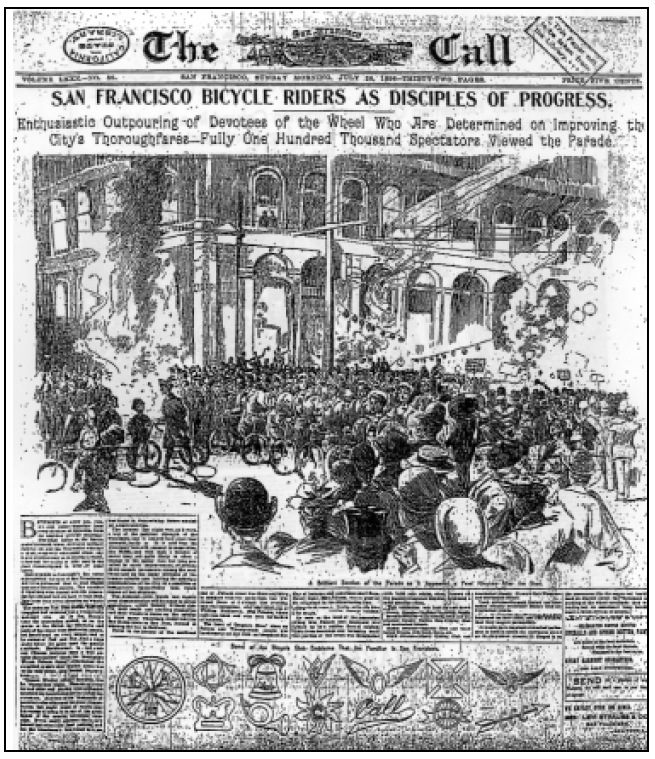By: Hank Chapot
The 1890s popular movement for Good Roads, pushed most ardently by bicyclists,is of note for several reasons. Primarily the fight for better conditions for bicycling unknowingly set the stage for the rise of the private automobile. Within a decade of the big demonstrations detailed here, better roads and improved tire technology combined with breakthroughs in internal combustion to launch the car industry. Obviously the private automobile has played a pivotal role in transferring the cost of transportation to the individual (thereby intensifying financial needs, summed up in the absurd conundrum of “driving to work to make money to pay for my car to drive to work”). It has also been central to the speeding up of daily life, especially in the sprawl of the post World War II era. (Of course if you’re stuck in a traffic jam during every commute,you may question how “speeded up” the car has made your life). In any case, the colorful popular demonstrations that filled San Francisco’s decrepit streets in the 1890s find a contemporary echo in the monthly Critical Mass bike rides that started in San Francisco in 1992 and spread across the world. The unintended consequences of the 19th century popular mobilization for Good Roads provide important food for thought as we engage in political movements of resistance and imagination.
Download the full version (PDF): The Great Bicycle Protest of 1896
About Hank Chabot
http://hchapot.blogspot.com/
“born in San Francisco, Mission High and SF State, Degree in Plant Biology, natural politician, writer, self-promoter, Green Party archivist, AFSCME leader, UC Berkeley gardener”
Tags: 1896, Great Bicycyle Protest, Hank Chabot, San Francisco







 RSS Feed
RSS Feed
I noticed you are linking to my historical article about the great bicycle protest of 1896. Thanks but I must ask for a few corrections; my name is spelled with a “P” as in Chapot, not “B” as in Chabot. Also, the opening editorial is posted under my name but I did not write it.